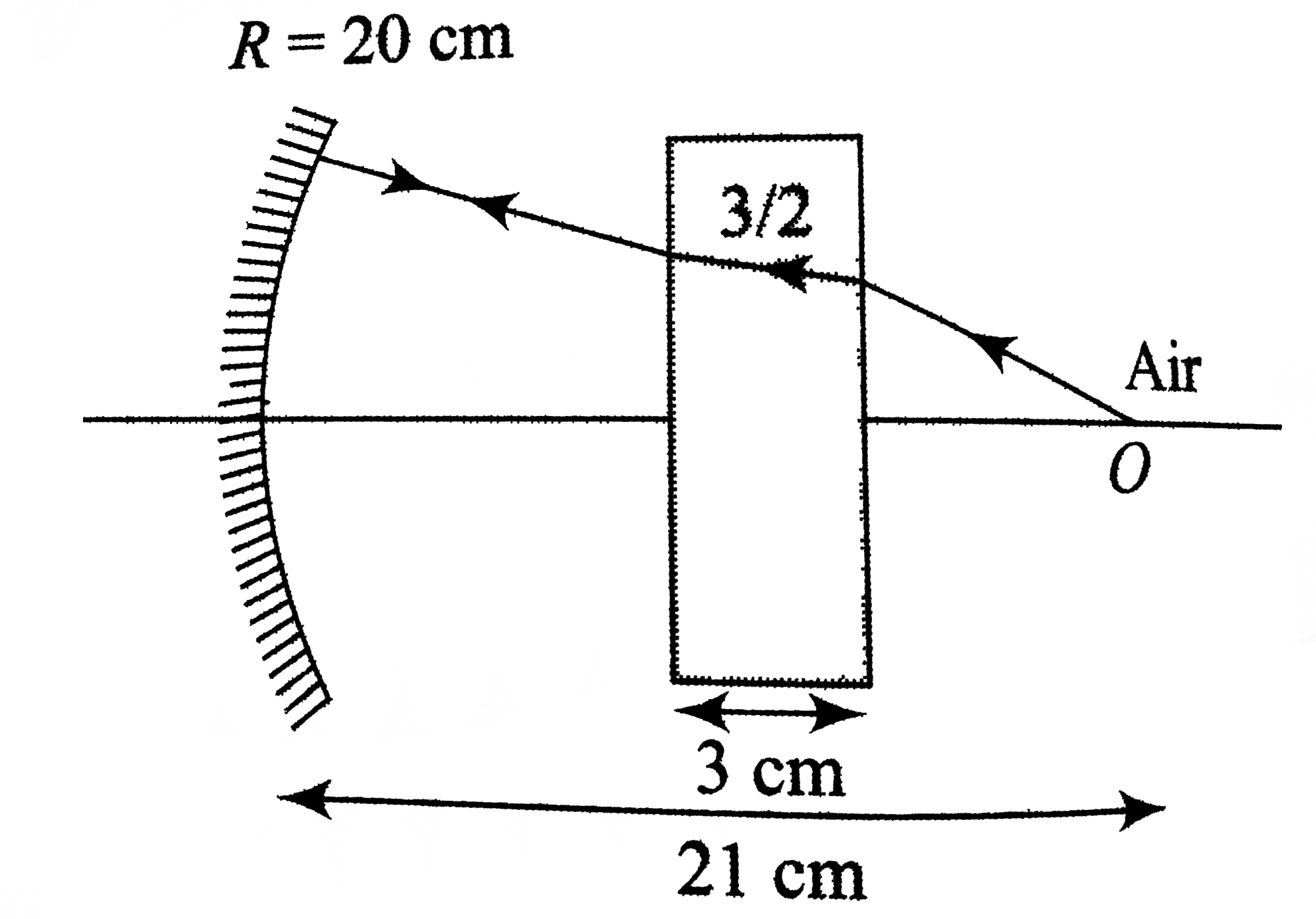An object is kept on the principal axis of a concave mirror of focal length 10cm, at a distance of 15 cm from its pole. The image formed by the mirror is:
Virtual and magnified
Virtual and diminished
Real and magnified
Real and diminished
The correct Answer is:C
To solve the problem of finding the image formed by a concave mirror, we will use the mirror formula and the magnification formula. Here’s a step-by-step solution:
Step 1: Identify the given values
- Focal length of the concave mirror (f) = -10 cm (negative because it is a concave mirror)
- Object distance (u) = -15 cm (negative as per the sign convention for mirrors)
Step 2: Use the mirror formula
The mirror formula is given by:
1f=1v+1u
Where:
- f is the focal length
- v is the image distance
- u is the object distance
Step 3: Substitute the known values into the mirror formula
Substituting the values of f and u:
1−10=1v+1−15
Step 4: Rearrange the equation
Rearranging the equation gives:
1v=1−10+115
Step 5: Find a common denominator and simplify
To add the fractions, find a common denominator (which is 30):
1−10=−330,115=230
Now substituting these values:
1v=−330+230=−130
Step 6: Solve for v
Taking the reciprocal gives:
v=−30 cm
Step 7: Determine the nature of the image
Since v is negative, this indicates that the image is real and located on the same side as the object.
Step 8: Calculate the magnification
The magnification (m) is given by:
m=−vu
Substituting the values:
m=−−30−15=−2
Step 9: Interpret the magnification
Since the magnification is greater than 1 (in absolute value), the image is inverted and magnified.
Conclusion
The image formed by the concave mirror is real, inverted, and magnified.
---
- Focal length of the concave mirror (f) = -10 cm (negative because it is a concave mirror)
- Object distance (u) = -15 cm (negative as per the sign convention for mirrors)
The mirror formula is given by:
1f=1v+1u
Where:
- f is the focal length
- v is the image distance
- u is the object distance
Substituting the values of f and u:
1−10=1v+1−15
Rearranging the equation gives:
1v=1−10+115
To add the fractions, find a common denominator (which is 30):
1−10=−330,115=230
Now substituting these values:
1v=−330+230=−130
Taking the reciprocal gives:
v=−30 cm
Since v is negative, this indicates that the image is real and located on the same side as the object.
The magnification (m) is given by:
m=−vu
Substituting the values:
m=−−30−15=−2
Since the magnification is greater than 1 (in absolute value), the image is inverted and magnified.
The image formed by the concave mirror is real, inverted, and magnified.
Similar Questions
An object is kept on the principal axis of a convex mirror of focal length 10cm at a distance of 10cm from the pole. The object starts moving at a velocity 20mm/sce towards the mirror at angle 30∘ with the principal axis. What will be the speed of its image and direction with the principal axis at that instant.
View SolutionAn object is placed on the principle axis of a concave mirror of focal length 10cm at a distance of 21cm from it. A glass slab is placed between the mirror and the object as shown in figure.
Find the distance of final image formed by the mirror.
 View Solution
View SolutionAn object is placed on the principal axis of concave mirror of focal length 10 cm at a distance of 8.0 cm from the pole. Find the position and the nature of the image.
View SolutionAn object is present on the principal axis of a concave mirror at a distance 30cm from it. Focal length of mirror is 20cm.

Q. Image formed by mirror isView SolutionA 4 cm object is placed perpendicular to the principal axis of a convex mirror of focal length 7.5 cm. The distance of the image from the mirror if it is 0.6 cm in size is 51/x where x is
View SolutionAn object is at 20 cm from a concave mirror of focal length 10 cm, the nature of image is
View SolutionThe image of an object placed on the principal axis of a concave mirror of focal length 12 cm is formed at a point which is 10cm more distance form the mirror than the object. The magnification of the image is
View SolutionA point object is moving on the principal axis of a concave mirror of focal length 24cm towards the mirror. When it is at a distance of 60cm from the mirror, its velocity is . 9sec/cm What is the velocity of the image at that instant
View SolutionA 1 cm object is placed perpendicular to the principal axis of a convex mirror of focal length 7.5 cm. Find its distance from the mirror if the image formed is 0.6 cm in size.
View SolutionA 2.0 cm high object is placed on the principal axis of a concave mirror at a distance of 12 cm from the pole. Ilf the image is inverted, real and 5.0 cm high, find the location of the image the focal length of the mirror.
View Solution

